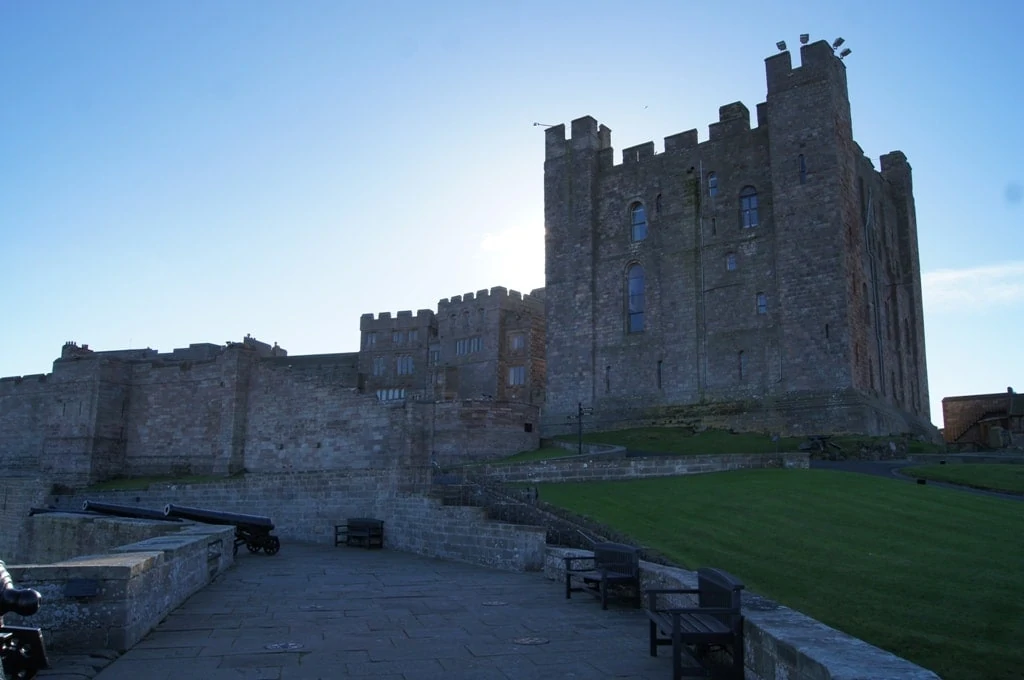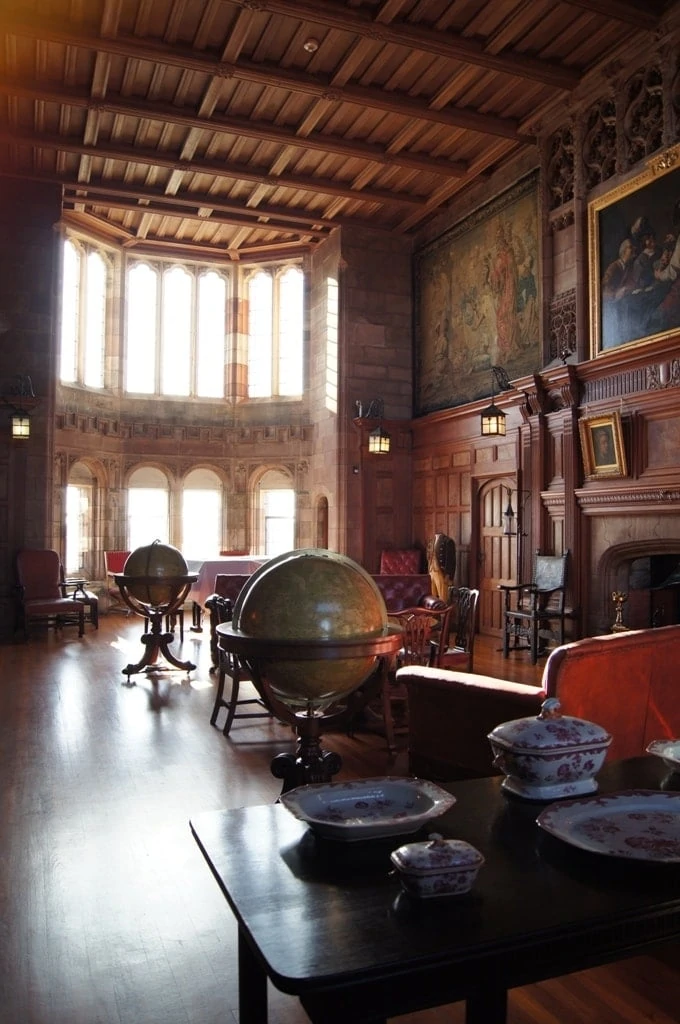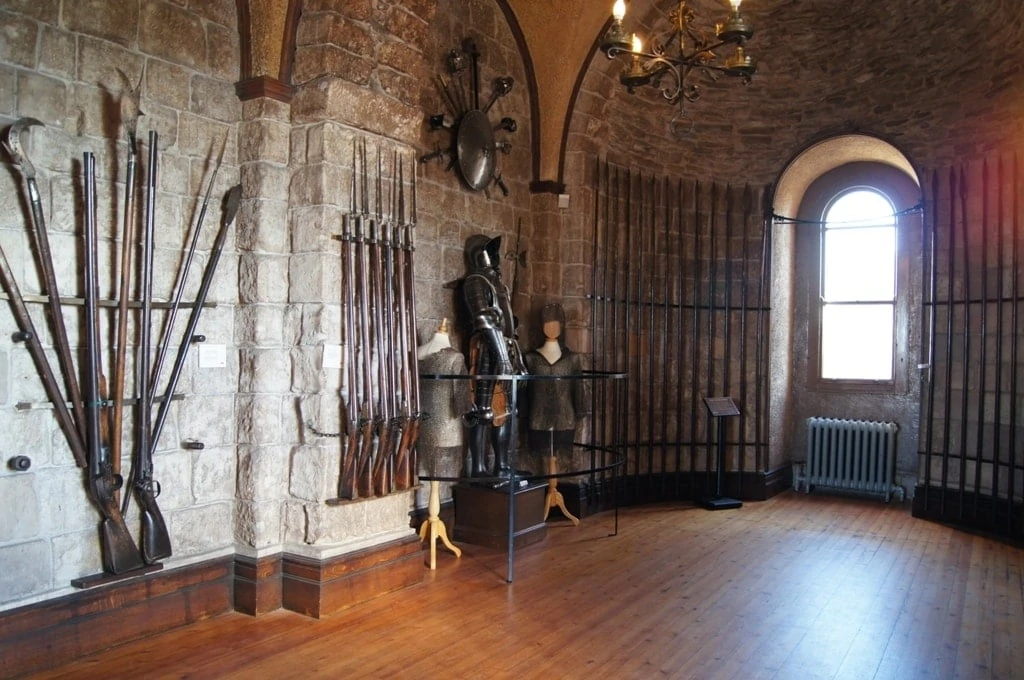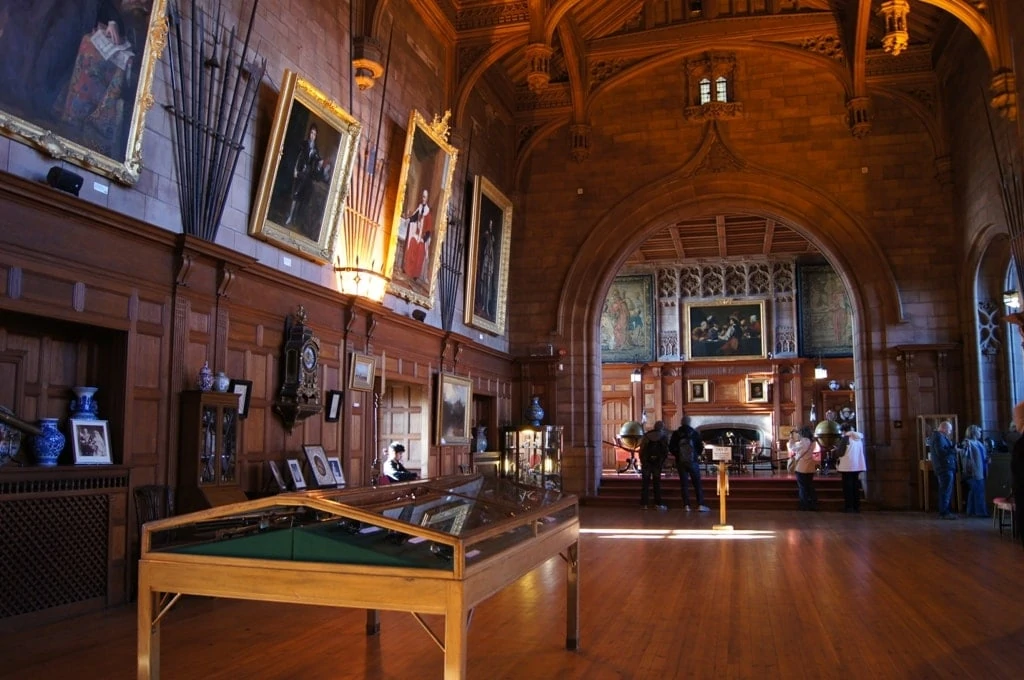This is a guest post by Jamie Anderson from Travel Addict
The northeast of England, especially Northumberland, is home to many beautiful and famous castles; from the film featured Alnwick Castle, to the medieval and ruined Warkworth Castle and the charming island-based Lindisfarne Castle. The most impressive of the Northumberland Castles is certainly Bamburgh Castle.
Bamburgh Castle has a beautiful seaside location along the coast of Northumberland, with beautiful views of the North Sea. The castle is privately owned by the Armstrong family since the late 19th century but is beautifully maintained despite not falling under the portfolios of either National Trust or English Heritage.

The castle is complete, not ruined, and the exhibit crosses through dozens of impressive rooms with fantastical objects and displays. The completeness, combined with the lengthy history, and the incredible sea views, make Bamburgh an incredible Castle to visit for a well-rounded castle tour.
Visiting Bamburgh Castle: A Complete Guide
How to get to Bamburgh Castle

The closest cities to Bamburgh Castle are either Newcastle-upon-Tyne or Edinburgh; where it sits along the Northumberland coast is between the two cities but closer to Newcastle. It makes for a fantastic stop for anyone on a road trip heading north through England to Scotland, especially along the A1
From Newcastle:
- 1 Hour by Car; practically a straight shot up the A1 to reach the Castle.
- 3 Hours by Train & Bus; there are routes that will get you to the Castle, but they run infrequently and involve a transfer from Bus/Bus or Train/Bus. It’s not my recommended route, but needs-must!
From Edinburgh:
- 1 Hour 45 Minutes by Car; a straight shot down the A1 to reach the Castle.
Entry to Bamburgh Castle
Cost for tickets to the Castle is £11.75 for an Adult, and there are a variety of other options for Child, Concession and Family tickets.
Parking at the castle is another £3, per car.
Since the Castle is privately owned there are no memberships that can be applied to the ticket cost, such as English Heritage or National Trust.
In the time of COVID – the Castle remains open, but they do require face masks while indoors. They’ve suggested booking tickets in advance through their website, which also gets guests a 5% discount for booking online, and they’ve gone cashless.
A visit to Bamburgh Castle will take around 2 hours; this will give you plenty of time to see the interior displays and expansive grounds. The tea room is also worth a visit and they have delightful scones on offer as well as a delicious variety of cakes.
History of Bamburgh Castle

Records of Bamburgh Castle date all the way back to 547 AD. The placement, on a hill overlooking the North Sea, made for an ideal defensible position and presented the Anglo-Saxons with a perfect place to place a fortress. For a time it was even the capital of the Kings of Northumbria and was known as Din Guaydri.
War and violence visited this castle on several occasions before 1000 – first with control being taken briefly by the Britons, and later when the castle was burned by the Vikings.
The Normans took control in the early 1000s and built a new castle at Bamburgh, and for a time the Castle was owned by the Royals. By 1610 the upkeep of the castle was too difficult and it was left to fall into disrepair, and came under the maintenance of the Crewer Trustees during the 1700s.
By the late 1800s, the finances of the trust and castle were in disrepair and it was sold to the Armstrong family, who own it until this day. Restoration of the castle was completed by 1901 and remains the private home of the Armstrong family, who have opened their doors to visitors far and wide.
What to see in Bamburgh Castle

There are 14 rooms open to the public with over 3,000 pieces of history within the exhibition and has expansive grounds that cover 9 acres. The large collection that spreads across the 14 State Rooms within the Castle represents a large cross-section of history and topics; from science, to politics, to science, to engineering, or even the aviation museum within the grounds.
- State Rooms; incredible showcases of architecture and the large exhibition, from suits of armour to porcelain figures.
- King’s Hall; featuring an exquisite wooden ceiling, constructed as part of the Victorian restoration works and is a magnificent piece of artistry.
- The Keep; one of the earlier buildings within the Castle it showcases the ingenuity of Medieval building and their fortification techniques.
- The Armory; a collection of armour and weapons spanning a variety of time periods.
- The Victorian Stables; you can stop here for a drink, or simply to admire the architecture.

- Clock Tower; the tea rooms are located in this beautiful structure, and serve a variety of freshly baked goods and other fine fares.
- The Grounds; the expansive 9 acres of land really offer great space for wandering and appreciating the views.
- Armstrong & Aviation Museum; a museum dedicated to some of the great engineering accomplishments of William Armstrong, the gentleman who bought the castle in 1894 and completed the restoration project.
What to see near Bamburgh Castle
Lindisfarne Castle is located a mere 30 minutes north along the A1 and has views of Bamburgh Castle and vice versa. Lindisfarne Castle is located on Holy Island and is a 16th-century castle with a distinctly different vibe to Bamburgh Castle. Lindisfarne Castle is a National Trust site
The Farne Islands are another place worth visiting while you’re in this part of Northumberland; it is a collection of nearly 20 islands that are inhabited by local saea life, like puffins, and can be accessed by ferry.
